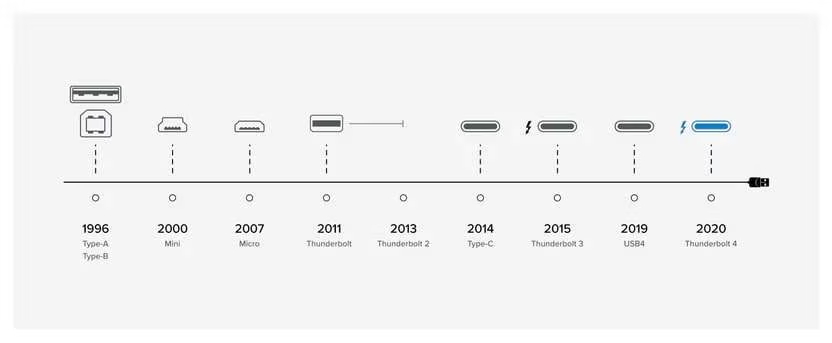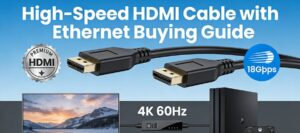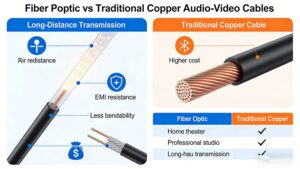In the ever-evolving world of connectivity, Thunderbolt has emerged as a powerhouse, revolutionizing how we connect devices to our computers. With the introduction of Thunderbolt 4, many users find themselves wondering: what sets it apart from Thunderbolt 3? In this comprehensive guide, we’ll break down the key differences, similarities, and practical implications of these two cutting-edge technologies.
A Brief Overview: What is Thunderbolt?
Before diving into the comparisons, let’s recap what Thunderbolt is. Developed by Intel in collaboration with Apple, Thunderbolt is a high-speed connectivity standard that combines data transfer, video output, and power delivery into a single, compact port. It uses the USB-C physical connector, making it versatile and widely compatible with various devices.

Key Differences Between Thunderbolt 3 and Thunderbolt 4
While Thunderbolt 3 and 4 share some core features, several critical upgrades in Thunderbolt 4 make it a more robust option. Let’s explore these differences in detail:
1. Bandwidth and Data Transfer Speed
- Thunderbolt 3: While it supports 40 Gbps, some implementations (especially in lower-cost devices) may only offer 20 Gbps due to relaxed certification requirements. This can lead to inconsistent performance across devices.
- Thunderbolt 4: Intel tightened the specifications, requiring all Thunderbolt 4 devices to support the full 40 Gbps bandwidth. This guarantees consistent speed across all certified products.
2. Video Output Capabilities
- Thunderbolt 3: Supports up to two 4K displays (3840×2160) at 60Hz or one 5K display (5120×2880) at 60Hz.
- Thunderbolt 4: Ups the ante by supporting up to two 4K displays o one 8K display (7680×4320) at 60Hz. This makes it ideal for professional workflows involving ultra-high-definition content.
3. Power Delivery (PD)
- Thunderbolt 3: Typically offers up to 100W of power, which is sufficient for charging laptops, smartphones, and small peripherals.
- Thunderbolt 4: Maintains the 100W maximum but includes more efficient power management, ensuring stable charging even when multiple devices are connected.
4. Security Features
- Thunderbolt 3: Relies on optional security protocols, which may not be enabled by default on all devices.
- Thunderbolt 4: Mandates support for Intel VT-d (Virtualization Technology for Directed I/O), which protects against physical DMA (Direct Memory Access) attacks. This is a critical upgrade for enterprise and government users handling sensitive data.
5. Compatibility and Daisy-Chaining
- Thunderbolt 3: Allows up to 6 devices in a daisy chain, but the total bandwidth is shared across all connected devices.
- Thunderbolt 4: Supports up to 4 devices in a daisy chain but guarantees that each device gets the full 40 Gbps bandwidth when needed. This reduces bottlenecks in complex setups.
Side-by-Side Comparison Table
|
Característica
|
Thunderbolt 3
|
Thunderbolt 4
|
|
Velocidad máxima de transferencia de datos
|
Up to 40 Gbps (varies)
|
40 Gbps (guaranteed)
|
|
Salida de vídeo
|
2x 4K or 1x 5K at 60Hz
|
2x 4K o 1x 8K a 60 Hz
|
|
Suministro de energía
|
Hasta 100 W
|
Up to 100W (improved efficiency)
|
|
Seguridad
|
Optional protocols
|
Mandatory Intel VT-d
|
|
Encadenamiento
|
Hasta 6 dispositivos
|
Up to 4 devices (full bandwidth)
|
|
Minimum Requirements
|
Relaxed (some 20 Gbps devices)
|
Strict (40 Gbps required)
|
¿Cuál elegir?
- Choose Thunderbolt 3 if: You’re on a budget, use basic peripherals (e.g., external hard drives, 4K monitors), and don’t need advanced security or 8K support. Many older laptops and desktops still feature Thunderbolt 3, and it remains a reliable choice for everyday use.
- Choose Thunderbolt 4 if: You work with high-resolution media (8K video, 3D rendering), need secure connections, or use multiple devices in a daisy chain. It’s also future-proof, as more 8K displays and high-performance peripherals hit the market.







